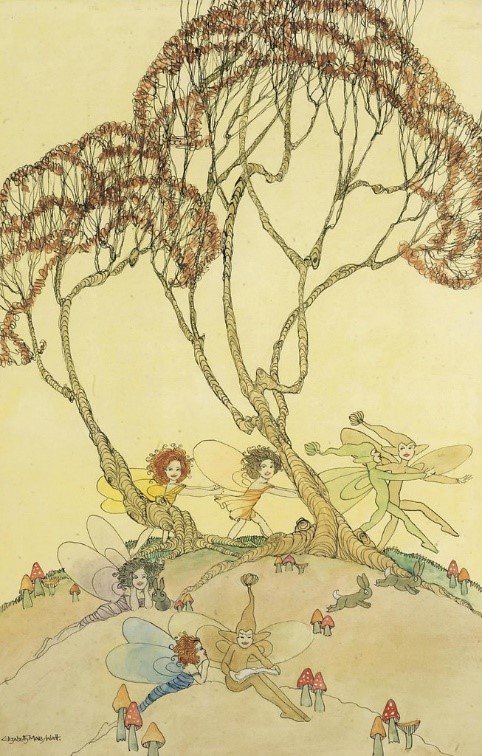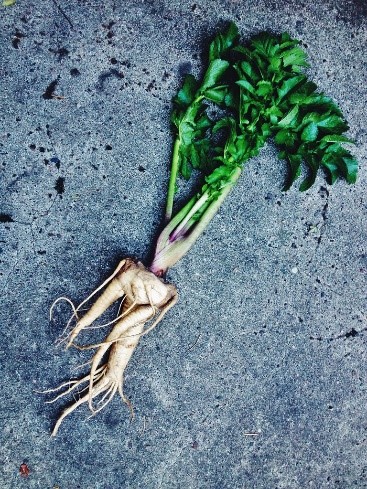A lot of museums and historic houses have been reported as areas of the supernatural, from folklore, with ghost trails and paranormal histories that would make anybody shiver. It makes sense after all, with such places having an immense amount of – well- history, that the supernatural would surely come with it at some point. However, we can also see that rather than always being in the past, there seems to be magic making around our museum in the present too! Let’s take a tour of the curious cases of mystery that have appeared around Jarrow Hall Museum lately. Maybe you can spot them on your next visit?
1) Wishing Spell on the Woodland Walk

If you go around the back of our farm (that’s gwyre in the language of the Anglo-Saxons) along the woodland path, just beyond the circle of round benches, and keeping an eye on the trees, you might come across what seems to be an odd collection of rubbish caught on a branch. But if you get closer to try and take it off (as I might have done while I was trying to clear up the area *cough* *cough*), you’ll see that it is actually made of all-natural materials and very securely tied together in a way that could only be done on purpose.
Is it a weird nod to the Blair witch project then? No! Well… sort of. While this might be some witchy work, this collection of items tied to a tree is actually just a harmless wishing spell! According to the witch and spell-blogger Nykos who runs a website dedicated to modern witchcraft, this is a spell that involves you tying up a pinecone with a few feathers to a tree. The feathers represent the wishes to be granted by the spell- two for friends and one for a stranger. Pinecones are often considered symbols of the earth and of nature and were considered symbols of fertility by the Romans and the Assyrians.
Fertility in this context could mean wishing for abundance and blessing of the land that we are on. Nykos states that this spell is a positive one and is ‘a simple and thoughtful way to help others and make the world a more magical place.’
2) Wood Sprites and other creepy creatures in folklore


From creating our own luck through spells to cryptic creatures, this next little bit of magical mystery is a bit harder to make out. We’ve all seen blurry photos of what could be mysterious creatures on the internet- from supposed gray aliens to a grainy bigfoot. Jarrow Hall Museum seems to have its own mystery monster now as our volunteer Ian discovered on one of our heritage projects. This photo was taken as our Anglo-Saxon village buildings had their ‘thatched’ roofs repaired by fixing holes and replacing some straw. Maybe a little creature was disturbed by the work? Although the photo is blurry, we can just make out a vague shape. If we could fully make out the small green figure, it would most likely look like a wood sprite.
English folklore is completely full of different types of elves, fairies, and ‘small folk’- from the Poldies in Cheshire to the Spriggans in Cornwall. The Sprites in folklore are a little bit like fairies, smaller nature spirits that live in wooded areas and usually like to be left alone. They often wear leaves or branches to help disguise themselves and be close to nature. But occasionally they do bite! According to European folklore, they usually live in sturdier oak trees. Perhaps this one found a convenient cozy place in the roof to hide out in the winter as most of our woodland trees on the farm are thinner birches? The blurriness could mean that as a naturally shy creature, it was in quite a hurry to leave when discovered!
Mandrakes: the new Museum Mascots?


Over in a little corner of our office, you will find some odd-looking figures that seem to resemble potatoes or balls of dirt. They are made out of clay and seem to not be the most cheerful in the world- (i.e. not the best people to greet you on a Monday Morning!)
This might make more sense, however, when you consider the fact that they are supposed to be mandrake plants! Mandrakes have had a large presence in folklore and mythology- they have been mentioned in the bible for conception and were used by the ancient Greeks and Romans. This is because mandrake plants (once in the body) can cause hallucinations and make people unconscious. Due to these properties, they were useful in religious rituals and in ancient medicines such as anaesthetics. Because Mandrake roots often look like a human body- people throughout history have been portraying them with human-like features.
The most famous tale told about Mandrakes- that you might have heard in movies and books like Harry Potter- is that if you pull its roots out of the ground, it will scream and cry so loudly, that any who hears it will die! No wonder our mandrakes look so sad!
As such, we know Jarrow Hall as a place of important history but with a little imagination, it can also turn into a place of supernatural adventures. Can you spot anything strange next time you come to visit?
By volunteer Maria Ciortea








